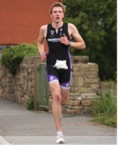Undergraduate perspective on Sports & Exercise Medicine – a BJSM blog series
By Matthew Gray
You may well have read the recent blog post or listened to the even more recent podcast featuring Cardiff medical student and Sport and Exercise Medicine (SEM) enthusiast Liam West. Although heavily summarising, Liam’s overarching conclusion was that students interested in SEM should be enthusiastic and proactive in gaining exposure in the speciality. Liam also puts forward a number of the many “challenges” that undergraduates face in their struggle for SEM success. These included the topic to which this post relates – the lack of mentors and shadowing experience available to students.
 Why does it matter?
Why does it matter?
It’s pretty clear that in order to attract the very best students, SEM must come across as a speciality that is enthusiastic and inclusive. The part to be played by positive role models for students in achieving this cannot be overstated. It’s interesting that both enthusiasm and approachability have been shown to rank amongst the highest of the characteristics sought by undergraduate students in a role model, albeit in a surgical context [1]. Positive role models also have a significant impact on student decisions regarding future careers [1, 2].
Although there is an impression amongst students of a lack of SEM mentors, the widespread enthusiasm projected by the BJSM community in general potentially suggests the opposite. It seems quite likely that there are many SEM clinicians out there keen to offer their invaluable advice and mentorship to undergraduates; it’s just that at the moment, there is no foolproof way of connecting the two.
Why can’t students take steps to contact clinicians under their own steam?
There is no doubt that students should definitely be using their initiative to get in touch with clinicians, but there are often a number of challenges:
- Firstly, students showing an interest in gaining initial experiences in SEM will inevitably have a limited idea of what the speciality entails. For example, who exactly comes under the umbrella of the term ‘sports medic’? Guidance in who to approach in this circumstance would be priceless.
- Secondly, there is a problem that contact details for a given clinician, whether it be postal or e-mail address, are rarely available online. This simple fact alone limits access to SEM mentors for students almost before a student has started looking!
- Finally, taking this approach is inefficient: there is no guarantee that a single clinician contacted for advice would be willing to offer it. Students are often forced to contact a number of individuals. In the process, this inconveniences those clinicians who do not want to be involved and, in the case of receiving multiple offers of mentorship, puts the student in an awkward position.
Although getting in touch with mentors ‘under your own steam’ is great, it is surely not the best approach. There must be a better way of linking students with SEM mentors. It seems that the root of the problem lies in a lack of established infrastructure to pair mentor and ‘mentee’ – something that could so easily be improved.
What can be done? – A suggestion
The introduction of an SEM mentor network (for the sake of this blog post, let’s call it SEMnet) where willing SEM professionals sign up to offer a point of e-mail contact for interested students in a given geographical area could be the simple solution.
For students, this would serve as a straight-forward but invaluable ‘foot in the SEM door’ allowing questions to be answered and serving as a platform to organise future SEM experiences.
In the UK, for example, SEMnet could be incorporated into the Faculty of Sport and Exercise Medicine (FSEM) as a benefit of (free) student affiliation. In turn, this would protect the privacy of clinician’s details, only allowing access to ratified, affiliated medical students. Promotion of SEMnet by BASEM, BJSM and within medical schools would also be key
in order to spread the message of this opportunity as widely as possible.
Consequences
By not improving access to mentors/SEM experiences to students, there is a real danger that talented students (who may well have become those championing the speciality in the future) may just pass by SEM. Ignorance of this issue is not really an option, especially if we hope to maintain the strength and quality of the speciality into the future.
References
- Ravindra P, Fitzgerald JE. Defining surgical role models and their influence on career choice. World J Surg 2011;35(4):704-9.
- Wright S, Wong A, Newill C. The impact of role models in medical education. J Gen Intern Med 1997;12:53-6.
**********************************************************************
 Matthew Gray is a fourth year medical student at Newcastle University, UK, with an avid interest in SEM. He is now a contributor to the BJSM ‘undergraduate perspective on SEM’ blog and amateur but enthusiastic triathlete!
Matthew Gray is a fourth year medical student at Newcastle University, UK, with an avid interest in SEM. He is now a contributor to the BJSM ‘undergraduate perspective on SEM’ blog and amateur but enthusiastic triathlete!
Liam West BSc (Hons) is a final year medical undergraduate student at Cardiff University, Wales. He coordinates the “Undergraduate Perspective on Sports & Exercise Medicine” Blog Series for BJSM.